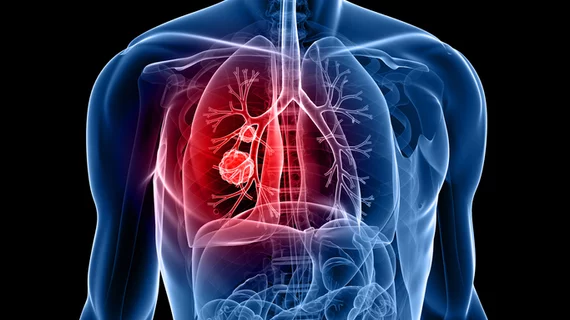Low-dose CT lung cancer screening adherence rates may be even worse than reported
Adherence to low-dose CT lung cancer screening recommendations may be even lower than reported in large randomized clinical trials, oncology experts reported Monday.
The same goes for smokers and individuals from minority populations, according to a systematic review of more than a dozen studies, published in JAMA Network Open. Rates varied dramatically, falling as low as 12% and high as 91%, but trended toward the latter with a longer period between the initial and subsequent scans.
“Although there is concern that screening rates nationally are low, equally important is the need for interventions to improve adherence to screening for current smokers and smokers from minority populations to fully realize the benefits of early detection of lung cancer,” Maria Lopez-Olivo, MD, PhD, an assistant professor in the Department of Health Services Research at the University of Texas MD Anderson Center, and colleagues wrote Nov. 16.
Checking high-risk current and former smokers for lung cancer with low-dose computed tomography has been proven to save lives. As such, the U.S. Preventive Services Task Force recommends annual LDCT screenings for those with a smoking history of at least 30 pack-years who maintain the habit or have quit recently, among other criteria. And yet, only about 1 in 20 eligible adults receives such screenings, according to one recent investigation.
High-profile studies such as the NELSON trial have reported adherence rates at 90%. Aiming to monitor the same marker outside clinical trials, Lopez-Olivo and co-authors reviewed 15 cohort studies that included nearly 17,000 individuals, calculating a pooled lung cancer screening adherence rate of 55%. Current smokers were found to be less likely to adhere to LCS than former smokers. Same for white patients, who were more likely than patients of other races. Those ages 65-73 were also more diligent than others ages 50-64, and having a college education also boosted adherence.
The paltry LDCT numbers contrast with a nearly 69% clip in colon screenings and 70% for breast cancer, Lopez-Olivo noted. But such programs are long-established, while lung cancer experts are still working to understand the factors impacting adherence.
“LDCT for LCS is a relatively nascent field with most intervention efforts still focusing on increasing uptake and acceptability among patients and practitioners rather than promoting the importance of annual adherence,” the authors wrote. Possible interventions, they added, could include extending the recommended interval between LCS, and adopting more risk-based screening methods in the field.
“Interventions should be directed toward increasing LCS adherence among several key groups: current smokers, patients of races other that white, and patients with lower levels of education,” Lopez-Olivo and co-authors advised.
Read more of the analysis in the JAMA Open Network here.

